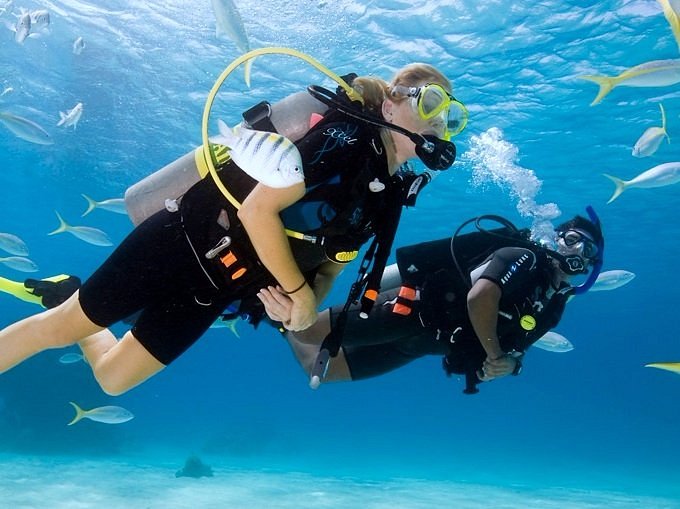
Diving is a sporting activity in the form of diving for a long time under water with certain equipment and various purposes. This activity is carried out for various purposes, ranging from sports, just recreation, to conducting research.
The main things needed for this sport are swimming skills and a diving certificate. So what if our swimming ability is mediocre? to explore this panorama do not have to be able to swim. Later, we will still be accompanied by a professional and teach them to stay calm when entering the water.
Diving must also be done with a variety of special equipment and supplies. Starting from swimsuits, swimming goggles, oxygen cylinders, frog legs, to special vests.
There are 3 basic techniques in this diving sport, namely Breath Hold Diving, SCUBA Diving, and SSBA Diving. Well, here’s the description!
1. Breath Hold Diving / Skin Diving
This basic technique has two kinds, namely in the form of Googling and Snorkeling.
a) Googling
This technique uses swimming goggles during a dive. Usually, it is used by nature divers and fishermen to find pearls, sea cucumbers, shoot fish, and others. Unfortunately, this technique makes it difficult for divers to equalize.
b) Snorkeling
Namely a technique that uses a tool in the form of a glass mask (face mask) to cover the eyes and nose, as well as a breathing tube (snorkell). How to dive is almost the same as googling, only this one is even easier. This is because the presence of a glass mask will make it easier for divers to equalize and swim on the surface without having to raise their heads first to take a breath.
2. SCUBA Diving
This technique is carried out at sea depths of around 18-39 m or less, depending on the needs and speed of the ocean currents. It is usually carried out for the purpose of searching for objects under the sea, research, observing the growth of marine life, and light ship repairs. Not infrequently, this technique is also used in underwater tourism objects, especially in an effort to attract visitors.
All SCUBA divers must first master the ESA (Emergency Swimming Ascent) technique, which is free swimming to the surface quickly while exhaling. In addition, to carry out this technique must also be accompanied by a professional.
3. SSBA (Surface Supply Breathing Apparatus Diving)
For SSBA dives, you have to use more sophisticated and complex equipment, right… Apart from that, the dive movements are also difficult to do. Usually, it is done to conduct research under the sea with a depth of 60 meters which takes about 40 minutes.